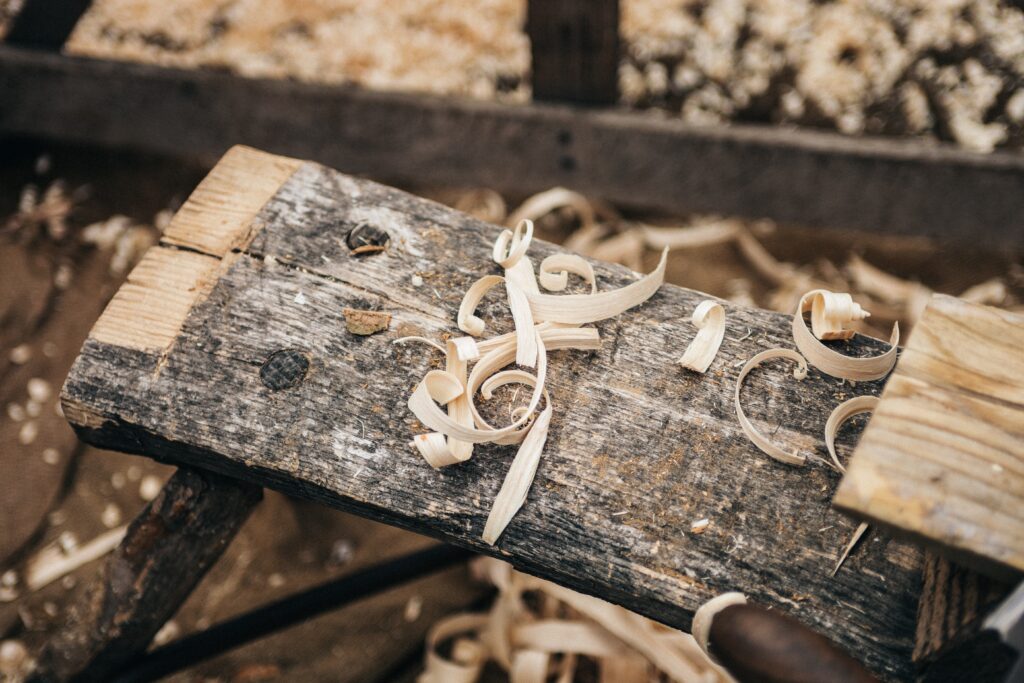Buy Furniture
Brief History of Woodworking and How High-Quality Furniture Production has Changed Over Time
Humans have been making things out of wood for a long time. In fact, we have been using it since before we evolved into Homo sapiens – a 2001 report published in the Journal of Human Evolution puts the date of the earliest evidence for woodworking at an astonishing 1.5 million years ago, which predates the previously acknowledged oldest wooden implement by roughly a million years.
So, suffice to say that wood has been a vital tool in our progression as a species. From those hazy days of prehistory right up until the modern age, wood has never waned in its popularity. Along the way, it has been used as a fuel, carved into tools, shaped into storage vessels and even joined to make… well, a lot of things.
Below is a brief history of our relationship with wood as a material – and how that relationship has developed over time.
Prehistory: Peninj, Tanzania
1.5 million years ago – when our ancestors were still going by the name of Homo erectus – a group in Tanzania used hand axes made from what is believed to be acacia wood. This finding predates what we used to think of as the first evidence of woodworking by about a million years.
It is no surprise that samples of this vintage are rarely found: given wood’s relative weakness for deterioration – particularly true before the use of things to preserve it – a specimen lasting all that time is hard to fathom. It does beg the question of what exactly our use of wood was in those intervening years, though. If there’s one missing piece to our evolutionary chain, it stands to reason that there are a fair few missing from our understanding of the evolution of woodwork.
Ancient Woodworking: A Global Pursuit
When we go back a few thousand years, we find a world where woodwork was a key component of society for all civilisations. Most used variations of the same basic tools, such as axes, pull saws and bow drills. From the Egyptians to the Celts, everyone seemed to be using it – and using it for pretty much everything.
Early Egyptians are acknowledged as being the inventors of veneering. The tomb of Semerkhet – a pharaoh who died over 5000 years ago – displays such handiwork. It was common for pharaohs to be placed in their tombs with objects that had ivory inlays and ebony wood veneers.
Egyptian woodworkers of this time used mortise and tenon joints to join lengths of timber, which were often strengthened with pegs and dowels and strips of leather. Some scholars believe that the Egyptians were the first to apply a finishing coat to the bare wood – a kind of varnish – though there is some discussion regarding the composition of such a treatment.
China has also had a long history of sophisticated woodworking traditions. During the Spring and Autumn period of their history (771 to 476 BCE) Lu Ban and his wife Lady Yun were renowned for their craft. They are thought to be the progenitors of Chinese woodworking. Lu Ban is believed to have introduced several tools to China, such as the plane and chalk-line. His teachings appeared in a book called Lu Ban Jing –curiously, a book which was written some 1,500 years after his death.
Ancient Rome is another example of an early civilisation that developed traditions of woodworking. It was essential to the Romans. They used it as a material for buildings, pipes, transportation, household items and tools. Unfortunately, the vast majority of Roman woodworking has been lost and much of our modern understanding of their methods is derived from their extensive literary record of the time.
The 17th and 18th Century: An Industrious Time
The evolution of woodworking is closely linked to that of our ability to make tools. Metalworkers refined the steelmaking process during this time – and with tougher, sharper tools came a greater accuracy in the manipulation of the wood, which in turn gave rise to more detailed and refined products.
Historians commonly state that woodworking innovations of the 18th century were among the major precursors to the Industrial Revolution. The advancements in tools like saw blades and bench planes and augers meant that timber could be shaped more easily and with greater accuracy. Wood was an absolutely vital material for making mills, presses and just about every other kind of machine that was designed for industrial processes, so this newfound ability to shape it into ever more complicated and ornate designs was instrumental.
It is no coincidence that the Baroque style of the 17th and 18th century flourished when it did. Known for its use of highly elaborate and ornate design, earlier woodworkers would simply not have been able to produce such sophisticated products on the scale seen at that time without the advancements in the tools available to them.
Mass Production: Wood in the Modern Age
Despite the evolution of metals and the emergence of plastics, our fondness for wood as a material continues to this day. The 19th century saw the explosive rise of the railway, for example – helped along by the advent of ever more powerful and efficient engines and factory apparatus. The years between 1870 and 1900 saw as much as a quarter of America’s timber production used in their pursuit to connect the continent.
Once into the 20th century, mass production took centre stage. Factories were able to make increasingly sophisticated products with decreasing amount of human interference. Tools could be made more quickly and cheaply too, so more and more trades people were able to afford them, creating a boom in artisanal, hand-crafted products that could compete against the behemoths of mass production.
From there, we arrive at the digital age. Wood is not only as popular as a material today as it has ever been, but because of our increasing awareness of the finite nature of the world’s resources, it is also on the way to being respected and treated with care. With this final evolution in our relationship, it’s hard to see a day when our love for it will end.

